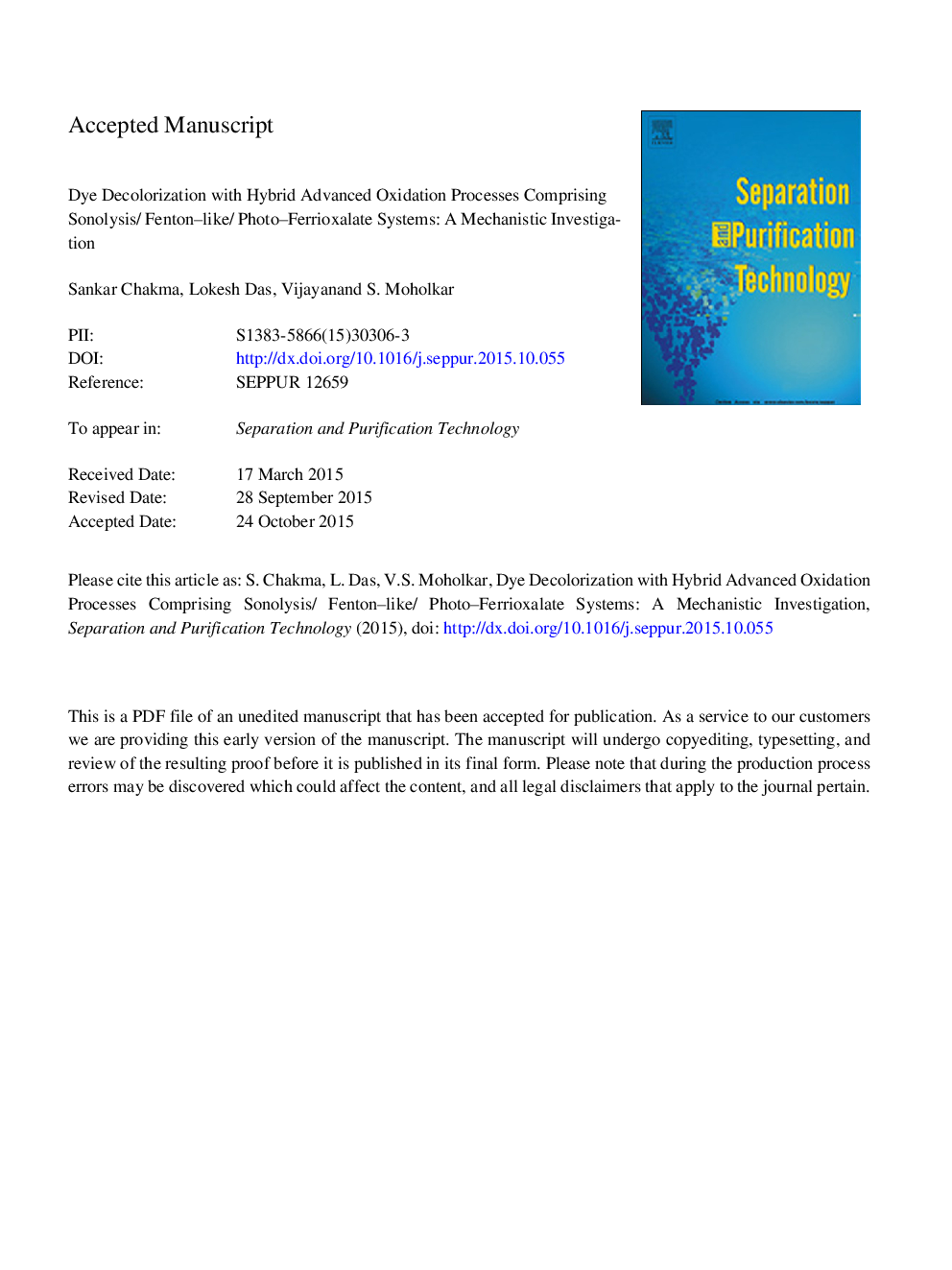| Article ID | Journal | Published Year | Pages | File Type |
|---|---|---|---|---|
| 10389723 | Separation and Purification Technology | 2015 | 41 Pages |
Abstract
Hybrid advanced oxidation processes (HAOPs), in which two or more advanced oxidation processes (AOPs) are applied simultaneously, have been investigated for effective decolorization/degradation of textile dyes. However, the mechanistic synergy underlying HAOPs has mostly remained unexplored. Present study attempts to identify the physical mechanism of binary and ternary HAOPs involving sonolysis, Fenton-like system and photo-ferrioxalate system, with approach of coupling experimental results with simulations of cavitation bubble dynamics. Among the individual AOPs, sonolysis is revealed to have least efficiency for decolorization. Thus, role of ultrasound and cavitation in HAOPs is mostly of physical nature, i.e. generation of micro-convection in the system. Other two AOPs, viz. Fenton-like and photo-ferrioxalate contribute mostly to decolorization due to volumetrically uniform production of oxidizing radicals. Binary HAOPs have positive synergy in that sonolysis enhances effect of either Fenton-like or photo-ferrioxalate system. Negative synergy is revealed in ternary HAOPs due to hindrance of pathways of Fenton-like and photo-ferrioxalate systems, as a result of competitive consumption of Fe3+ species. Dissolved oxygen in the system also plays crucial role in pathway of photo-ferrioxalate system. For unsaturated medium with depleted dissolved oxygen, negative synergy in ternary HAOP of sonolysis + Fenton-like + photo-ferrioxalate is further enhanced.
Related Topics
Physical Sciences and Engineering
Chemical Engineering
Filtration and Separation
Authors
Sankar Chakma, Lokesh Das, Vijayanand S. Moholkar,
